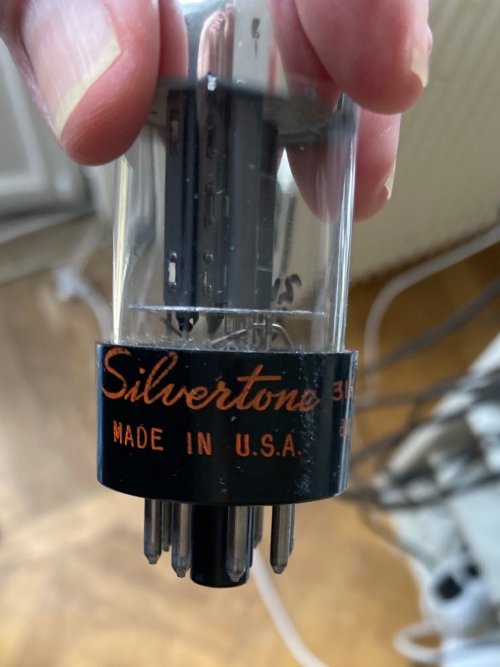I'm sceptical of vendors claiming to have the secret sauce (that no one else can figure out) that makes the items they sell far superior to the very same items sold by all other vendors.
Does anyone have links or direct knowledge to confirm or refute the claims of RAM TUBE WORKS?
I'm no electonic engineer, so maybe I'm of the mark, but a few things about this pitch bother me:
1) It's a sales pitch.
2) No one seems to be copying him.
3) "Circuit designers are looking at Mu primarily, Rp next and we hardly care about Gm at all."
Well it seems a designer would be working under the assumption that the tubes used in his design are working to factory specification, and if a tube is faltering the owner will replace it with a new one. What is there to care about?
4) "A few years ago I heard that one of my competitors tried to duplicate the RAM tester and gave up after spending $100,000.
OK, millions of tube testers have been made that measure Gm (they used to be found in every hardware, drug and discount store across the USA) - so that can't be too hard. Mu (aka gain) is a measure of amplification - again something common and often done. I'm not familiar with Rp (which he said was plate resistance). Measuring resistance is also something very common, and even if (for some odd reason) it was more difficult to so for a plate inside tube I doubt it is far from an unsolvable problem.
Someone spent $100,000 and couldn't figure out make these three measurements? If so, IMHO it speaks to their incompetence more than the difficulty of the task. Oh wait, I just remembered he said "These parameters are locked into a relationship so that knowing any two will yield the third."
5) He talks about specific of problems (drift, calibration, etc.) common tube testers face, yet he does not claim to have solved these problems. Rather he says let's measure something else instead. Note that no facts are given to show that the end result is better, just that it took a long time for him to build his testers and "he heard" someone failed to copy it.
I'm much more comfortable with vendors who give measured results. Something like "We have the best matched tubes with Mu, Rp, and Gm each matched to within 3%!"
Instead he employs what in marketing speak is known as FUD (fear, uncertainty, and doubt). If the product you are selling doesn't stand out on it's own merits, you spread FUD against your competitors products.
It seems to me he is either really bad at marketing, or *really* good at it.
PS - I find it hilarious that the company name (RAM) in dminches post above actually links to Walmart.com!





















 , but still even if they were broken in and then not used for 30 years (for example) - how many hours of 'new' usage do they need to reach optimal performance?
, but still even if they were broken in and then not used for 30 years (for example) - how many hours of 'new' usage do they need to reach optimal performance?